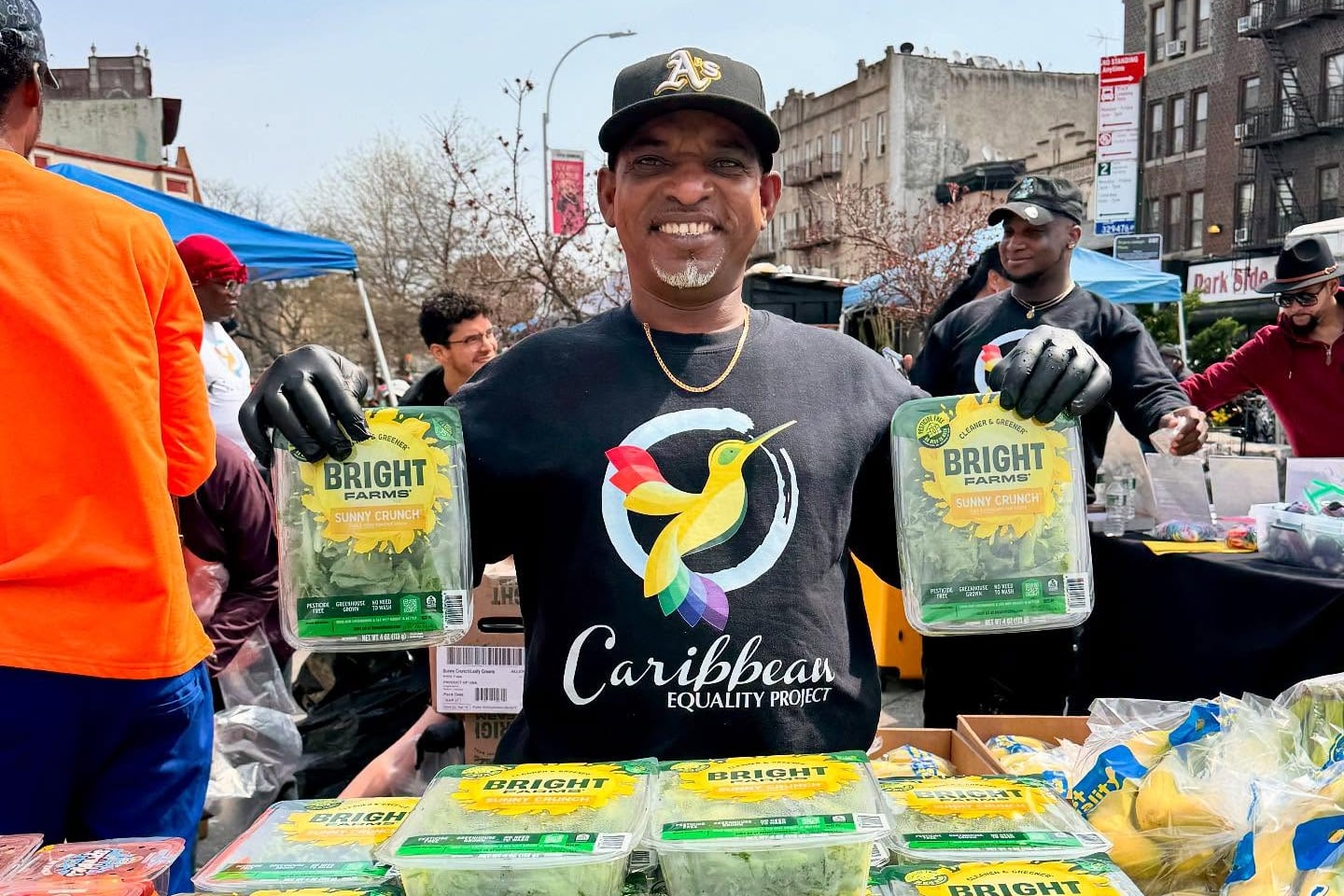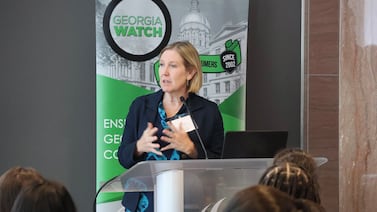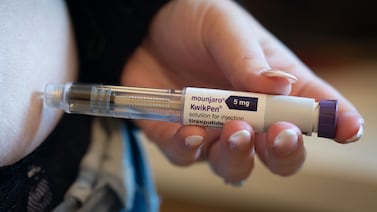Public health, explained: Sign up to receive Healthbeat’s free national newsletter here.
For Alfred Atherley-Ward, food means family.
The 42-year-old former chef fondly recalls memories of home-cooked meals with their daughter back in their native Guyana.
“My daughter would always look forward to when I was going to be in the kitchen cooking up food, especially dal, that we would sit together and enjoy,” Atherley-Ward said. “The look on her face, and she with her little hands in the bowl – those moments are so precious to me.”
Atherley-Ward views cooking meals rooted in their Indo- and Afro-Caribbean background as a way to feel closer to the now 19-year-old daughter they left behind while seeking asylum in the United States in 2021. The move followed years of persecution for Atherley-Ward, who identifies as queer and uses they/them pronouns. In Guyana, homosexuality is considered a crime.
The experience of fleeing violence back home coupled with struggles to access food and housing upon relocating to New York City made them all the more grateful for the culturally inclusive food items available at the Food Justice Program, an initiative of the Queens-based Caribbean Equality Project, which provides legal and social services to Indo- and Afro-Caribbean LGBTQ+ immigrants and asylum seekers.
“We go through so much mental health trauma,” said Atherley-Ward, who experienced an 18-month period of homelessness shortly after moving. “All we’re looking for is a place of acceptance on this journey.”
The Food Justice Program is one of a growing number of food pantries in New York City working to provide culturally responsive help for the city’s immigrant communities. A lifeline amid the Covid-19 pandemic, these programs now find their sustainability threatened by the Trump administration’s cuts to federal food aid.
“The pandemic was a spark for an increase in food needs, and that need never dissipated,” said Caitlin Caspi, director of food security initiatives at the Rudd Center for Food Policy and Health at the University of Connecticut. “In the last few years, we’ve seen high levels of federal food assistance, but all of that now is being stripped away.”
NYC food insecurity nearly doubled at start of pandemic
Research shows that New York City’s incidence of food insecurity, which is defined as uncertain access to adequate food at the household level, nearly doubled during the first six months of the pandemic. A 2020 report found that the number of food-insecure individuals increased from 1.2 million in March 2020 to 2 million in August 2020, an incidence rate of nearly 14.6%.
The pandemic’s impact on communities of color, including immigrant populations, was particularly pronounced, with more than half of Black, Latino, and Asian New Yorkers reporting an inability to buy groceries during the period, compared to 42% of white New Yorkers. Issues of limited food access, which can lead to increased risks of obesity, diabetes, and cardiovascular disease as a result of a nutrition-poor diet, continue to persist among those groups.
“They say Covid is over, but the folks we’re providing service to, it’s never over for them. Their rent has increased, their daily expenses have increased, but their wages haven’t.”
— Mohammad Razvi, CEO of the Council of Peoples Organization
More recent data, including 2024, shows that while the citywide food insecurity rate remains elevated at pandemic levels, the rates of food insecurity for communities of color are two to three times higher in every borough compared to their white counterparts.
Jennifer Cadenhead, executive director of the Laurie M. Tisch Center for Food, Education and Policy at Teachers College, Columbia University, said people of color’s heightened food vulnerability is due to low wages and a lack of worker protections in service-based industries, such as restaurants, which employ many immigrants and were disproportionately impacted by the pandemic.
“In terms of food security, people of color tended to do worse both during Covid and in their ability to get back to baseline,” Cadenhead said.
The economic downturn of the pandemic contributed to increased use of food pantry services. One in three New Yorkers reported using a food pantry at least once post-pandemic compared to 1 in 5 New Yorkers pre-pandemic, according to a 2024 report issued by the Robin Hood Foundation.
Why access to cultural food options matters
Immigrant recipients of food pantry services state being unsure of how to cook American foods, research shows. A lack of access to culturally inclusive foods is also associated with poorer mental health outcomes, such as increased feelings of shame and stigma, in immigrant communities.
Culturally inclusive food pantries are essential to creating a more dignified experience for clients by allowing them to choose their own food, Caspi said.
“Food pantries have been trying to move toward more choice-based programs that allow people to feel like they’re shopping in a grocery store,” she said.
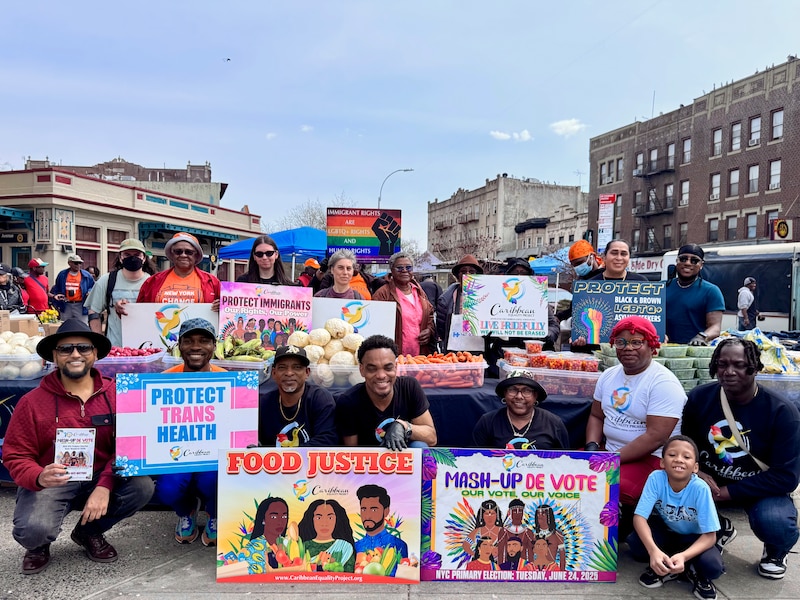
The Caribbean Equality Project’s Food Justice Program, which launched in Flatbush in 2020 following the pandemic, caters to the city’s Caribbean diaspora and has served more than 55,000 people. Among its offerings are ingredients for balanjay, a Guyanese dish made with eggplant, potatoes, cumin, and other traditional spices; as well as lentils and flour.
Atherley-Ward, who now works as a community adviser at the Caribbean Equality Project, said the organization’s commitment to distributing fresh produce, such as cabbage and tomatoes, which serve as ingredients for traditional curries, supports the nutritional needs of the Caribbean diaspora.
“I’m not just getting food, but rather food that I’m accustomed to, that I can create healthy meals with,” they said. “It helps with the daily stress of wondering ‘what can I make with this?’”
Trump cuts to food aid threaten local programs
The Trump administration’s cuts to federal funding for food banks and other emergency assistance food programs threaten projects like the Food Justice Program. In March, the administration announced that $500 million in support of the Local Food Purchase Assistance Cooperative Agreement Program, a federal initiative that enables food banks to purchase goods from local farms, would be cancelled.
Later that month, the administration pulled another $500 million dedicated to The Emergency Food Assistance Program, which distributes emergency food assistance to states, from the federal budget.
The Caribbean Equality Project’s executive director, Mohamed Amin, worries about the impact. He points to a recent letter from the organization’s food assistance partner, the Campaign Against Hunger, that warns of reduced food aid deliveries in the coming months.
At present, the Campaign Against Hunger provides the Food Justice Program with monthly food aid for 250 families. A decrease in resources would put additional financial strain on the organization, he said, which already spends $5,000 a month to support additional pantry clients.
“These cuts not only have a direct impact on the community members that we serve, but also on programs like ours that fill the gap,” Amin said. “And now we’re seeing this gap become wider and more disproportionate.”
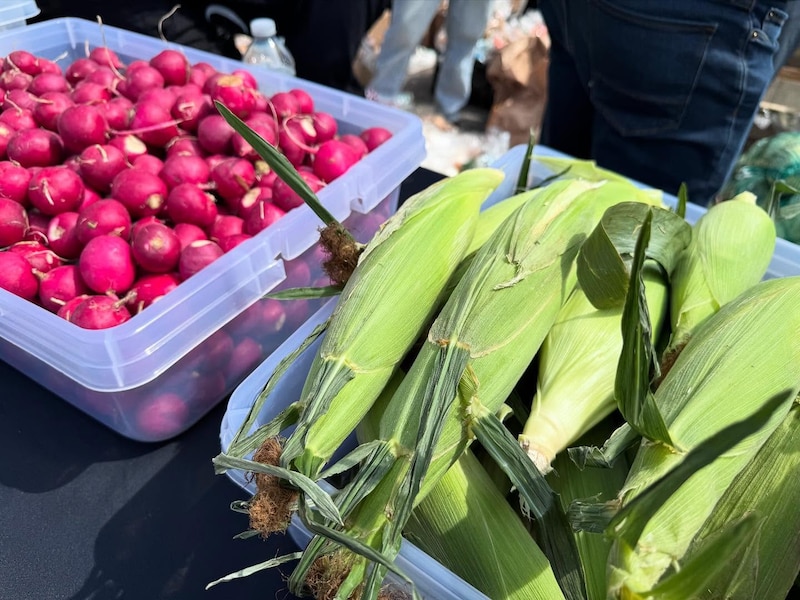
The structure of the emergency food system also places extra financial burden on organizations like the Caribbean Equality Project, which strives to meet the needs of communities of color. TEFAP food aid, which flows down to local pantries like the Food Justice Program, is made up of staple items like apples and beans, meaning it doesn’t always meet the cultural needs of communities, Caspi said.
Amin and his colleagues remain committed to utilizing existing pantry funding to purchase culturally inclusive products.
“We are not willing to negotiate the needs of our communities,” he said.
Food prices up 20% over five years ago
The funding cuts come at a time of greater need for food aid, much of it driven by increases in the cost of living. According to Federal Reserve Economic Data, prices on goods, including food, are up 20% over five years ago.
“They say Covid is over, but the folks we’re providing service to, it’s never over for them. Their rent has increased, their daily expenses have increased, but their wages haven’t,” said Mohammad Razvi, CEO of the Council of Peoples Organization, a Brooklyn-based group that provides social services to low-income immigrant families, a majority of whom are South Asian and Muslim.
The council, which operates a weekly halal food pantry started shortly before the pandemic, has become increasingly reliant on food donations from local businesses. The donations, which help make up for reduced goods from local food banks, are critical to serving the pantry’s more than 2,000 weekly clients.
In recent months, though, Razvi has observed shorter pantry lines, which he attributes to the Trump administration’s immigration policies and threats of mass deportation.
“People are saying, ‘Can I take this for my friend? He’s afraid to come’,” he said.
Fearful clients are requesting home delivery, but Amin said it’s hard to establish new services in a time of limited resources.
“We don’t have the infrastructure to deliver to families who are undocumented, who are afraid to come because of fears of ICE,” he said of Immigration and Customs Enforcement.
Support for such food pantry operational costs are the focus of efforts by local advocacy organizations. Grace Bonilla, president and CEO of United Way of New York City, said the organization is working to double the city’s funding to $100 million in the upcoming fiscal year for Community Food Connection, a program supporting more than 700 community kitchens and food pantries.
“When the dust settles, and people begin to emerge, we could see spikes in food need,” she said of the political climate against immigrants. “We have to be prepared for that.”
Amin, though, remains hopeful.
“I think about abundance, and I dream about abundance, and I manifest abundance because that is what the immigrant community needs right now,” he said. “We need an abundance of resources to make sure that we are not just surviving, but thriving.”
This story has been updated to correct that the Caribbean Equality Project is based in Queens, not Brooklyn.
This story was produced in partnership with the Health & Science Reporting Program at the Craig Newmark Graduate School of Journalism at CUNY.

